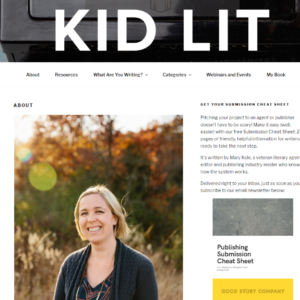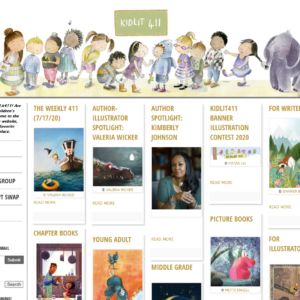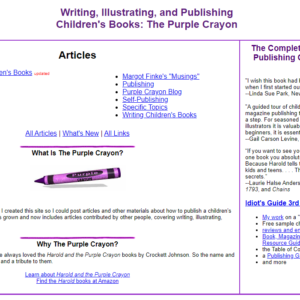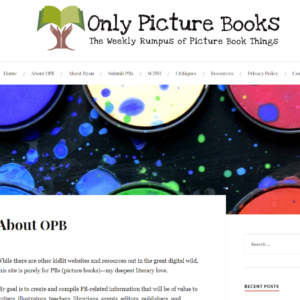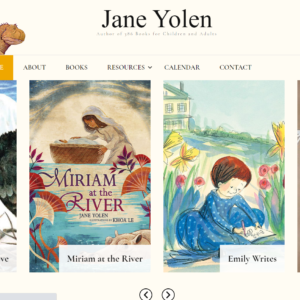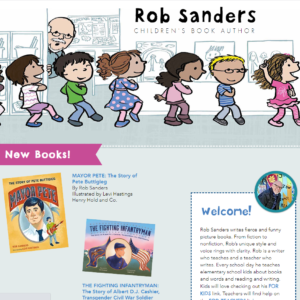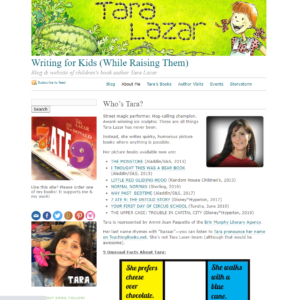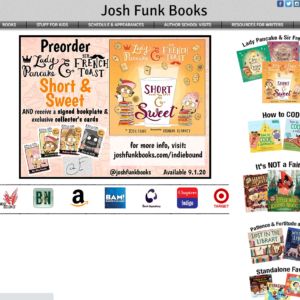Great Kidlit Resource Websites
Kidlit Authors We Love
Freebies from PB Peeps
9 Tips for Picture Book Writers
3 Tips from
Peepster Dianne Ochiltree:
- Read-aloud-ability. Picture books are the ultimate read-aloud performance piece! So, write with ‘read-aloud-ability’ in mind. Read your manuscript aloud as you revise. Better yet, ask someone else to do this so you can listen actively for any potential tongue-twisters or awkward rhythms.
- Word precision. Make every word count. Write with vivid verbs; specific nouns; imaginative adverbs and evocative adjectives. Cast sentences in an active, not passive, manner. (Example: “she was walking out the door” versus “she stomped/tiptoed/shuffled through the door”.)
- The Sense. Children are very keyed in to the five senses. That’s why you need to write with sight, sound, smell, taste, and touch firmly in mind. When revising your manuscript, designate a colored marker for each sense, and underscore words/scenes with the appropriate color each time one of the five senses comes up in your story. Make sure all five senses are represented.
3 Tips from
Peepster Ryan G. Van Cleave
- Story First. When asked what your story is about, if you answer is about manners, patience, morals–basically anything except character or conflict–you’ve got an issue. First and foremost, picture books stories need to be entertaining and tell an actual story. Once you have that, then you can weave in or suggest all the other themes, motifs, and lessons you want.
- Rejection. Even the most talented of us face rejection. Instead of seeing it as a negative, see it as a positive. Why? Because it’s going to take a certain number of submissions to reach the acceptance you want. Sometimes it’s one submission, but if’s often ten, twenty, or fifty. Every rejection moves you one step closer to that “Yes!”
Clever people might wonder why you don’t just send fifty submissions at at time. Here’s why. Editors occasionally provide feedback that will greatly improve the story. You don’t want to have already tried your story everywhere before you receive unexpected-but-welcome story-changing notes.
Go with three to five submissions at at time, and stick with the mindset that every “No!” gets you one step closer to a “Yes!” It’s so much more helpful than anger, frustration, and sadness. Get that next submission out as soon as you can–keep the forward momentum going. - Read. Perhaps the recommendation to read sounds silly, but I’ve been in poetry classes where a teacher asks who’s bought a book of poetry in the last 12 months and no one raised a hand. The same thing happens with some would-be picture books writers–they rely on the nostalgia-haze of memory versus what’s actually being bought by editors today.
A related problem of not having a current robust picture-book reading agenda is this–if the picture books models you have from decades ago, the voice, style, and sensibilities are going to feel out of touch with today’s readers.
3 Tips from
Peepster Sylvia Whitman
Like other stories, narrative picture books have an arc, with a beginning, middle, and end.
- Beginnings. Picture books start fast. They have to. As writers, we have to accomplish a lot with very few words. The best stories usually open with 1) a character with 2) a wish/goal/problem. A caterpillar is very hungry. Humpty Dumpty has to get up after his fall.
- As you revise, pay close attention to the first few lines. Have you introduced the protagonist(s)? Have you set the story in motion?
- Here’s how Doreen Cronin opens the hilarious Click, Clack, Moo: Cows That Type: “Farmer Brown has a problem. His cows like to type. All day long he hears Click, clack, moo.”
- Middles. Obstacles makes stories interesting. Often the obstacle is another character with an opposing wish or goal. In Mo Willems’s The Pigeon Finds a Hot Dog, Pigeon is poised to enjoy a tasty find when pesky Duckling shows up and tries to guilt Pigeon into sharing. Who will win? How? In problem stories, like Dave Pilkey’s Dog Breath, the situation often gets worse (failure!) before the characters can find a resolution. The Tosis family is on the brink of giving away Hally until … You’ll have to read to find out.
- As you revise, identify the conflict or problem and the turning points on the way to its resolution. Are there stakes for the character(s), reasons for a reader to care about the outcome?
- As you revise, identify the conflict or problem and the turning points on the way to its resolution. Are there stakes for the character(s), reasons for a reader to care about the outcome?
- Endings. Animator Andrew Stanton likens storytelling to joke telling. Everything leads up to that punchline. Often endings mirror beginnings. The story starts at dawn and ends at bedtime. The character lacks something at the beginning but has gained it, perhaps an unexpected version of it, at the end—often with a twist that elicits a laugh.
- Endings don’t have to be funny, though they often are in “loud” (boisterous) picture books. But they do have to deliver on the challenge that opened the story. In Sam McBratney’s classic cuddler, Guess How Much I Love You, Big Nutbrown Hare wins the affectionate one-upmanship but in a way that honors Little Nutbrown Hare, who started the competition.
